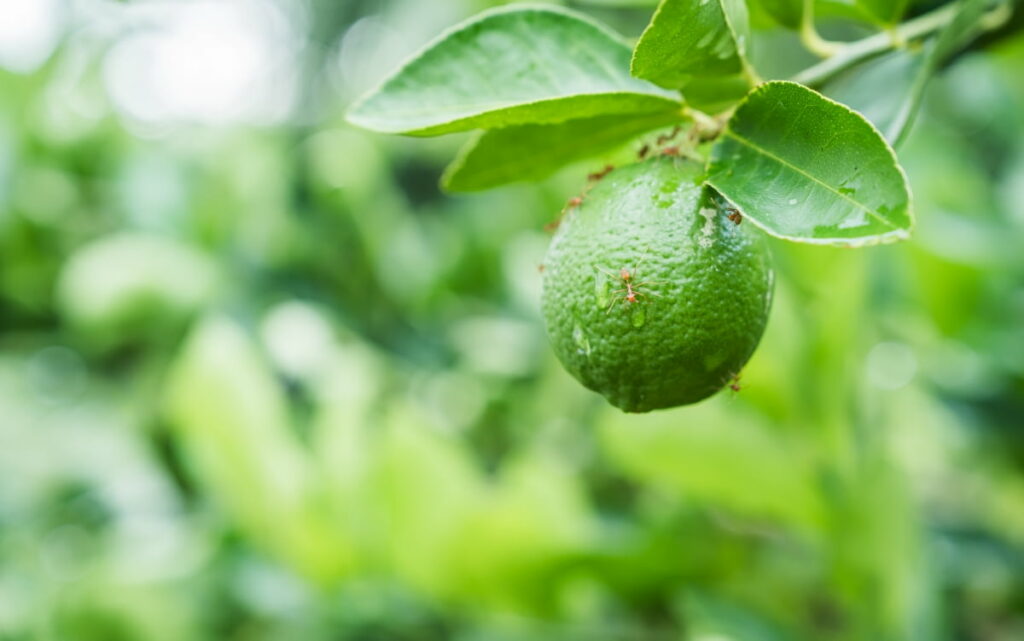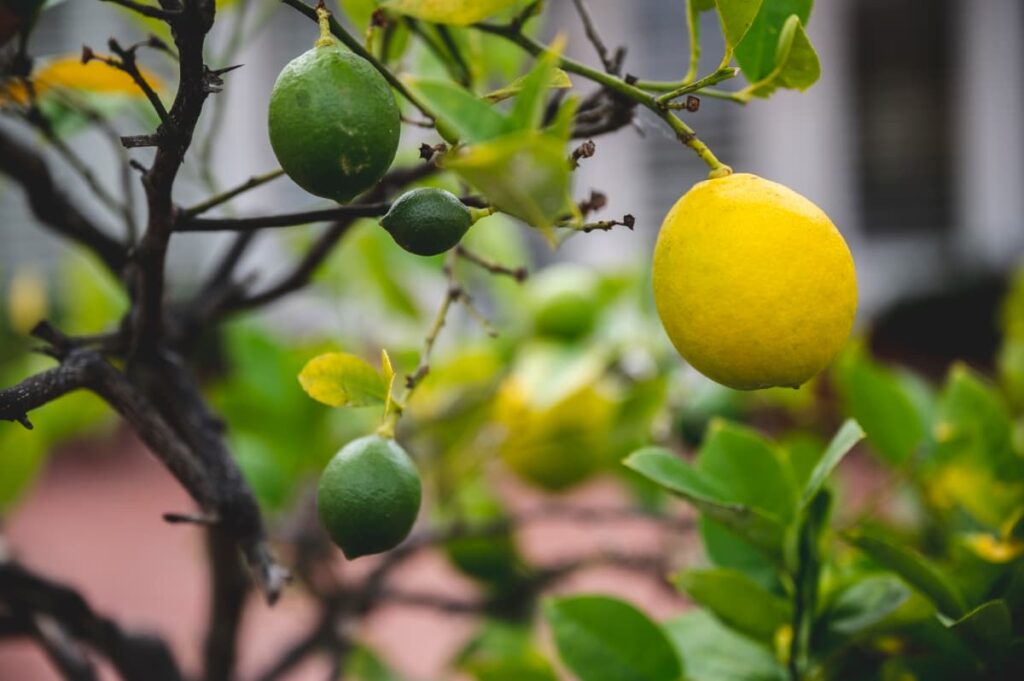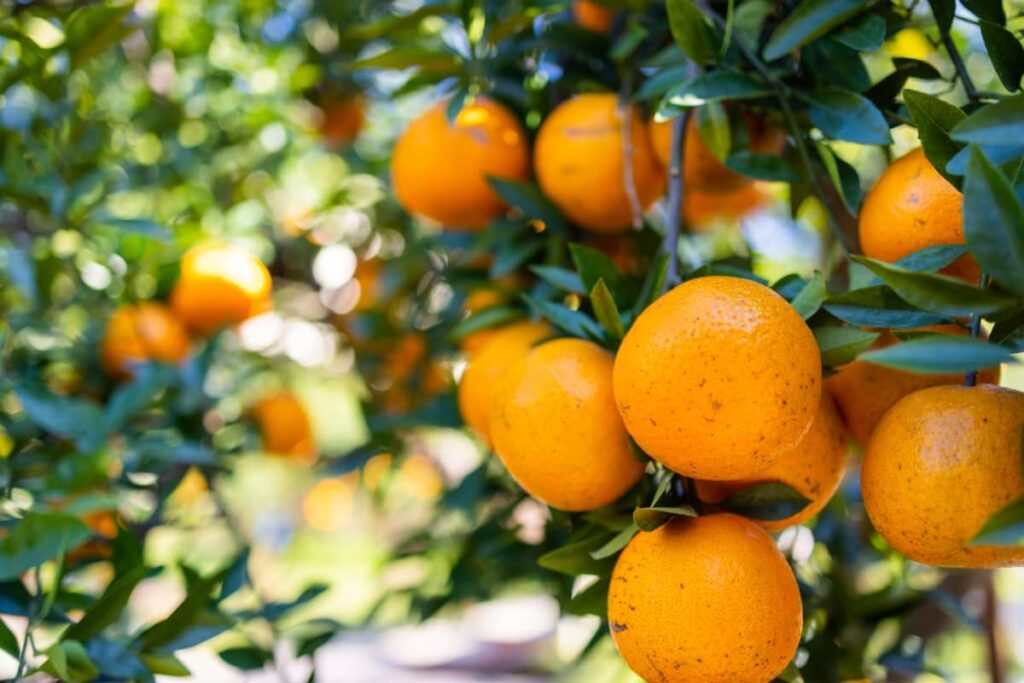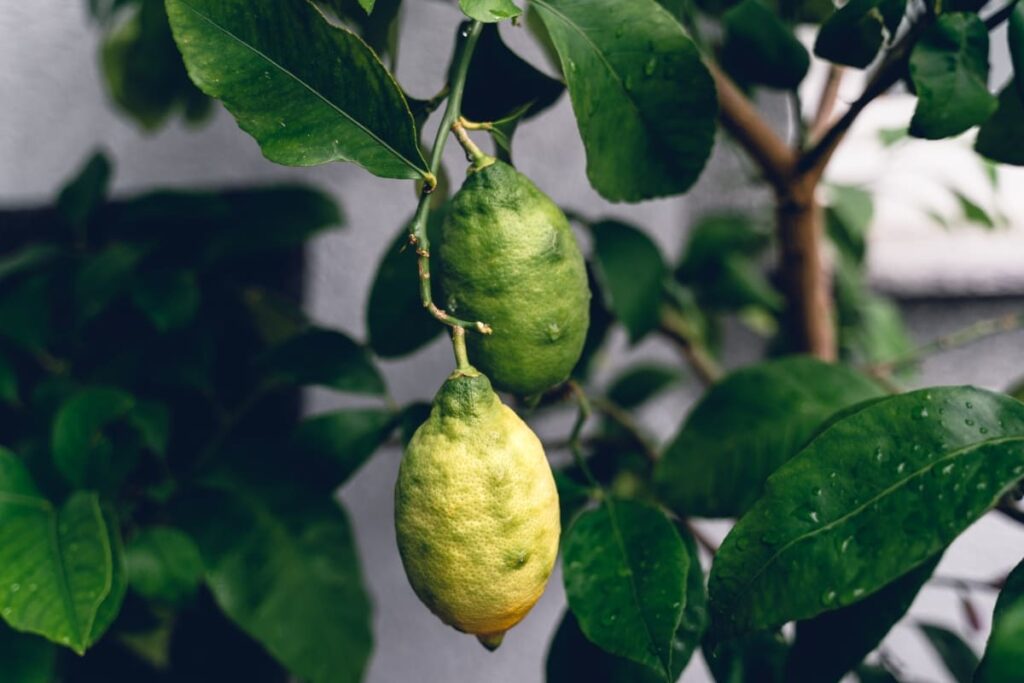Citrus is one of the most important fruit crops in the world, but it is also affected by many insect pests that can reduce its yield and quality. In this blog, we will discuss some of the biological, chemical, and integrated pest management (IPM) strategies that can help citrus growers control these pests and protect their orchards.

We will also cover some of the monitoring and detection techniques, cultural practices, the impact of climate change, sustainable approaches, economic considerations, and emerging technologies in citrus insect pest management. Finally, we will provide a table of some of the common insect pests in citrus trees, their damage, and their control methods.
Insect Pest Management in Citrus
Biological Control of Insect Pests in Citrus Orchards
Biological control is the use of natural enemies like predators, parasitoids, and pathogens to suppress insect pest populations. It reduces the need for chemical pesticides, enhances ecosystem biodiversity, and minimizes pest resistance and environmental contamination. Common pests include citrus leafminers, citrus psyllids, aphids, mealybugs, scales, and thrips. These insects cause damage to citrus plants by curling and distorting young leaves, sucking sap, transmitting bacterial diseases, and producing honeydew.
Biological control agents include ladybugs, lacewings, hoverflies, parasitic wasps, and entomopathogenic fungi. Mealybugs feed on citrus fruits, leaves, and roots, producing honeydew that attracts ants and mold. Scales dry up citrus fruits, leaves, twigs, and branches, and thrips deform or drop them. Biological control agents include predatory bugs, predatory mites, lacewings, parasitic wasps, and entomopathogenic fungi.
Chemical Control Strategies for Insect Pests in Citrus
Chemical control is the use of synthetic or natural pesticides to kill or repel insect pests. While it can provide quick and effective results, it has negative impacts on human health, non-target organisms, and the environment. Chemical control should be used as a last resort after careful consideration of pest biology, pesticide mode of action, application method, timing, and frequency.
Citrus insect pests can be treated with various insecticides, such as systemic insecticides like imidacloprid or abamectin, contact insecticides like spinosad or pyrethrin, and repellents like kaolin clay or neem oil. Aphids feed on sap, while mealybugs feed on fruits and roots. Contact insecticides like pyrethrin or azadirachtin can be sprayed on the foliage to kill adults on the surface.
At the same time, repellents like kaolin clay, neem oil can be applied to the fruits and branches to deter adults from laying eggs. Thrips feed on flowers and fruits, and contact insecticides like pyrethrin or azadirachtin can be sprayed on the flowers and fruits to kill adults on the surface. Mites, such as abamectin or spiromesifen, can be applied to the foliage and fruits to kill the eggs and adults that feed on them.
Monitoring and Detection Techniques for Citrus Insect Pests
Citrus insect pests pose a significant threat to citrus orchards, causing damage to leaves, stems, flowers, and fruits and transmitting diseases like citrus tristeza virus and huanglongbing. Regular monitoring and detection are crucial for effective management strategies. Common techniques include visual inspection, sticky traps, pheromone traps, and molecular techniques.
Visual inspection involves checking plants for signs of insect damage, while sticky traps attract flying insects like aphids, psyllids, whiteflies, and black flies. Pheromone traps mimic the natural sex attractants of certain insects, allowing for monitoring population dynamics and mating activity. Molecular techniques, like polymerase chain reaction (PCR), loop-mediated isothermal amplification (LAMP), and real-time PCR, use DNA or RNA analysis to identify and diagnose pests and diseases.
Cultural Practices for Managing Insect Pests in Citrus Orchards
Cultural practices are preventive, low-cost, and eco-friendly methods used to manage insect pests in citrus orchards. These practices include pruning, which removes dead or diseased branches or shoots to improve air circulation and sanitation, and sanitation, which destroys fallen leaves and debris to reduce breeding sites and food sources for insects.
In case you missed it: 15 Best Fertilizers for Citrus Tree: Homemade, Organic, Liquid, NPK, Schedule, and Prices

Mulching, which covers the soil surface with organic or inorganic materials, helps conserve soil moisture, suppress weeds, moderate temperature, and improve fertility. It also deters soil-borne insects by creating a physical barrier or altering soil pH. Intercropping, which involves growing different crops together, enhances crop diversity and productivity by attracting beneficial insects and repelling pest insects by altering their host-finding behavior or creating an unfavorable microclimate.
Impact of Climate Change on Insect Pest Management in Citrus
Climate change is a global phenomenon affects various environmental factors, including temperature, precipitation, humidity, wind speed, and solar radiation. It can significantly impact insect pest management in citrus by influencing their distribution, abundance, behavior, biology, and ecology. Climate change can lead to increased pest range and invasion, altering pest phenology and life cycle and enhancing pest survival and reproduction.
Climate change can provide more food resources or reduce natural enemies, allowing mealybugs to produce more offspring. Additionally, climate change can induce genetic or physiological changes in pest insects, making them more resistant to stress factors like heat, drought, and pesticides. Furthermore, climate change can increase the severity and frequency of pest damage and disease transmission by enhancing the feeding activity, mobility, or vector capacity of some pest insects.
Sustainable Approaches to Insect Pests in Citrus Orchards
Sustainable pest management (IPM) is a holistic approach to controlling insect pests in citrus orchards. It combines cultural, biological, physical, behavioral, and chemical methods to reduce their negative impacts on the environment, economy, and society.
IPM includes monitoring and scouting, setting acceptable levels of pest insects or damage, biological control using living organisms, physical control using mechanical devices or barriers, behavioral control using stimuli, and chemical control using synthetic or natural substances. These approaches are effective, safe, and long-lasting, making them a sustainable solution for citrus orchard management.
Economic Considerations in Citrus Insect Pests
Yield Loss
- Decreases citrus fruit quantity.
- Impacts income and profitability for growers.
Quality Loss
- Affects size, shape, color, flavor, texture, and nutritional value.
- Reduces marketability and fruit value.
Control Cost
- Expenditure on pest control measures.
- Increases production costs and decreases profitability.
Price Fluctuation
- Influenced by changes in supply and demand.
- Affects revenue and profit for growers and consumers.
Trade Restrictions
- Imposed by importing countries for pest prevention.
- Limits export potential and impacts competitiveness.
- Affects the diversity and choice of citrus fruits for consumers.
Emerging Technologies in Citrus Insect Pest Management
Pheromone Traps
- Mimic insect communication signals.
- Lure, trap, monitor, and disrupt mating behavior.
- Effective against citrus psyllid, a citrus greening disease vector.
- Decrease insecticide use and enhance biological control.
Remote Sensing and AI
- Detect and diagnose citrus pests and diseases.
- Identify infestations and assess crop damage.
- Optimize pest management decisions.
- Utilize advanced technology for precision in citrus insect pest management.
Citrus Integrated Pest Management (IPM) Strategies
Scouting and Monitoring
- Regular tree inspections identify pests, damage, and natural enemies.
- Guides pest management timing and effectiveness evaluation.
Thresholds and Decision-Making
- Scientific data and economic analysis set pest levels justifying management actions.
- Prevents excessive pesticide use, reducing costs and risks.
Prevention and Avoidance
- Cultural practices, resistant varieties, and quarantine minimize pest likelihood and severity.
- Maintains a resilient crop tolerant to some pest pressure.
Intervention and Suppression
- Curative methods (mechanical, biological, botanical, mineral, or chemical) reduce pest populations.
- Emphasizes compatibility, selectivity, timing, and rotation for optimal efficacy and minimal negative impacts.
Eco-Friendly Citrus Pest Management
Eco-friendly citrus pest management minimizes the use of synthetic pesticides and maximizes natural resources. Benefits include:
- Reducing pesticide residues on fruits and leaves.
- Reducing pesticide runoff.
- Reducing pesticide drift.
- Reducing pesticide resistance.
- Enhancing biodiversity.
Challenges
- Finding affordable alternatives.
- Balancing pest control efficacy with environmental safety.
- Adapting to changing pest scenarios due to climate change or globalization.
- Educating growers and consumers to adopt eco-friendly practices. However, it is crucial to find reliable alternatives and motivate consumers to adopt eco-friendly practices.
In case you missed it: How to Increase Citrus Fruit Size: Exploring Optimization for Larger Citrus Fruit Growth

Common Insect Pests in Citrus Trees
| Pest | Damage | Control Measures | Latest Chemicals |
| Citrus psyllid | Feeds on young shoots and leaves, transmits citrus greening disease | Pheromone traps, biological control (parasitoids, predators), insecticides (neonicotinoids, pyrethroids) | Flupyradifurone, Sulfoxaflor |
| Citrus leafminer | Mines inside leaves, causes leaf curling and reduced photosynthesis | Pheromone traps, biological control (parasitoids), insecticides (spinosad, abamectin) | Cyantraniliprole |
| Aphid | Sucks sap from leaves and stems, causes leaf curling and honeydew production | Biological control (ladybugs, lacewings), insecticidal soap or oil, insecticides (imidacloprid, acetamiprid) | Flonicamid |
| Citrus thrips | Feeds on young fruits and leaves, causes scarring and deformation | Biological control (predatory mites), insecticides (spinetoram, spirotetramat) | Cyantraniliprole |
| Mealybug | Sucks sap from fruits and leaves, causes honeydew production and sooty mold growth | Biological control (parasitoids, predators), insecticidal soap or oil, insecticides (buprofezin, clothianidin) | Flupyradifurone |
| Scale | Sucks sap from fruits and leaves, causes honeydew production and sooty mold growth | Biological control (parasitoids, predators), insecticidal soap or oil, insecticides (spirotetramat, pyriproxyfen) | Sulfoxaflor |
| Mediterranean citrus mite | Feeds on leaves and fruits, causes bronzing and russeting | Biological control (predatory mites), miticides (hexythiazox, fenpyroximate) | Etoxazole |
In case you missed it: Tangerine vs. Orange: Know the Key Differences

Conclusion
Managing insect pests in citrus requires a comprehensive approach. Integrating biological, chemical, and IPM control strategies ensures effective pest reduction while minimizing environmental impact. The synergy of these methods promotes a balanced and sustainable approach to safeguarding citrus crops from detrimental pest infestations.
- How to Raise Pigs in Your Own Backyard: A Comprehensive Guide
- Budget Friendly Sheep Shed Ideas: Cheap and Low-Cost Tips
- How Much Do Cattle Farmers Make: Revenue Streams in Cattle Farming
- Management Pests and Diseases in Your Cotton Field
- Sheep Farming Business Plan for Beginners
- Aquaponic Farming at Home: A Step-By-Step Guide
- Profitable Village Farming Business Ideas in 2024
- High-Yield Aquaculture: Fast-Growing Fish for Farming
- Effective Fish Pond Construction Techniques for Beginners
